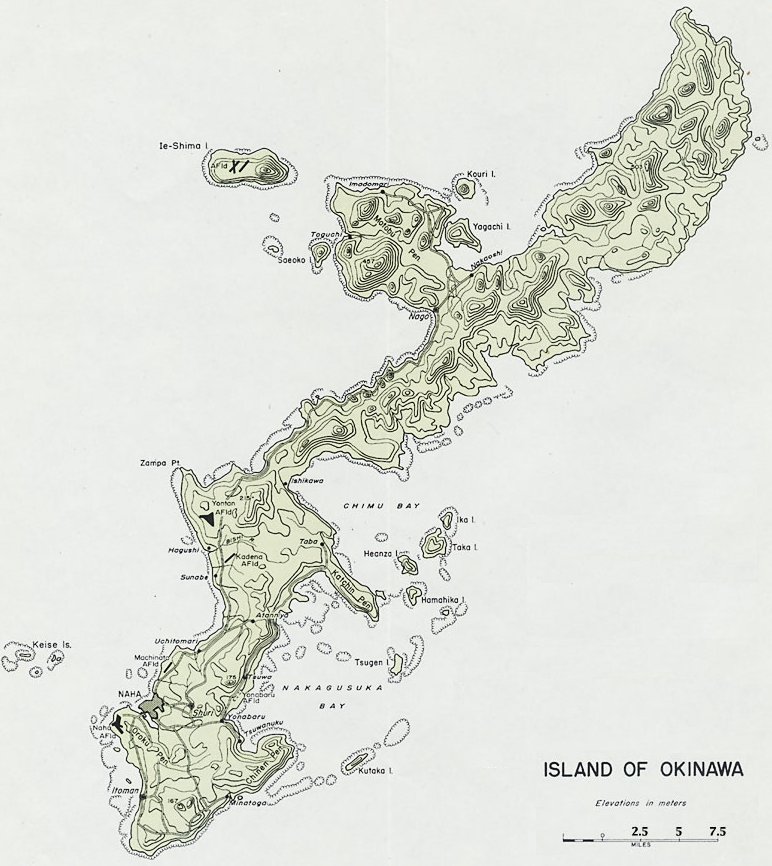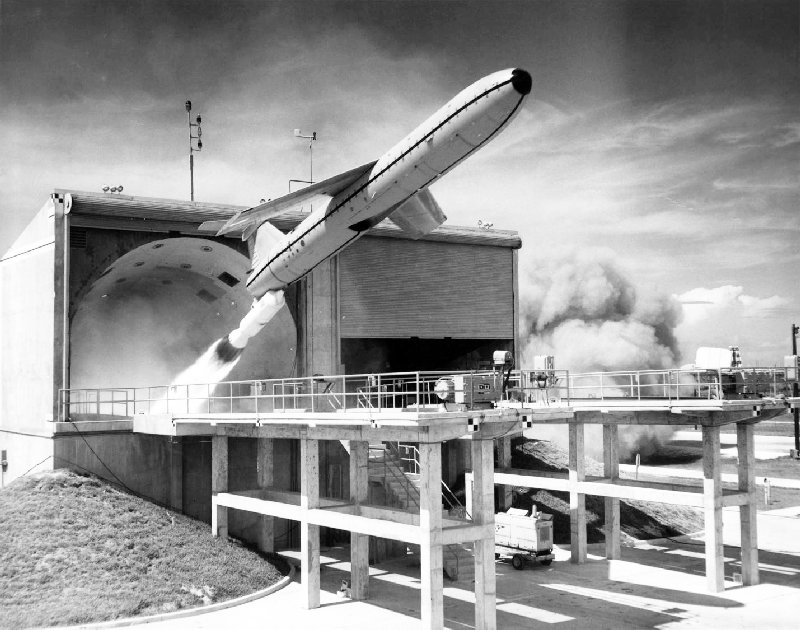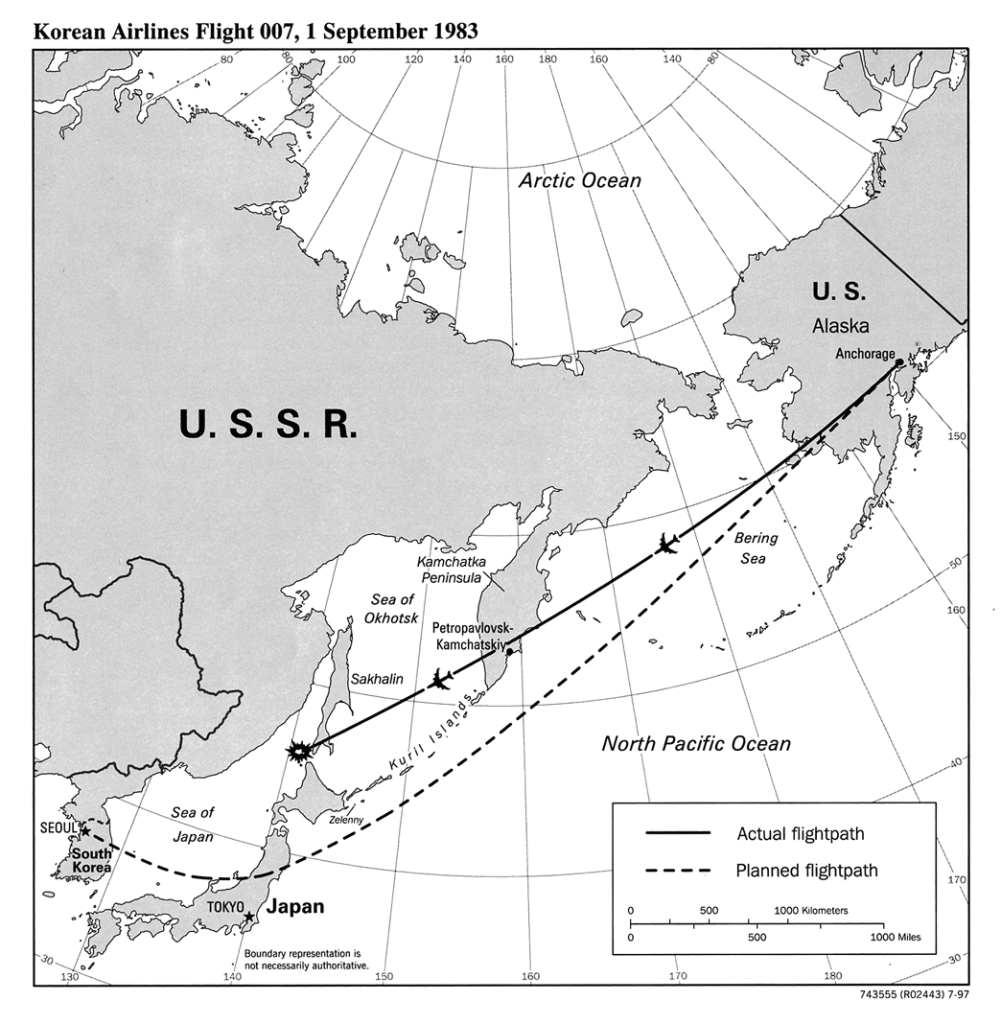Today, the Cold War era is often regarded as a time of unnecessary paranoia. After all, there was much talk of impending nuclear war, but mutually assured destruction never really panned out. So, it must have been nothing more than unfounded fear of exchanging nukes with the Reds, right? Wrong. As more stories from this tenuous time are revealed, we’re coming to the realization that we very well may have missed all-out destruction by the skin of our teeth.
In order to illustrate this point, we’ve gathered two historical incidents which demonstrate the danger that accidental nuclear war once posed (and may still pose, for that matter). If not for the courageous actions of these military men on both sides of the Cold War conflict, the world could have become an irradiated wasteland decades ago.
The Okinawa Missile Incident – October 28th, 1962

In October 2015, Air Force veteran John Bordne revealed for the first time the story of one fateful evening during the height of the Cuban Missile Crisis. Bordne was stationed at one of the four secret U.S. missile launch sites located on the island of Okinawa. During his midnight shift on October 28th, 1962, U.S. forces were operating at DEFCON 2, and were ready to be upgraded to DEFCON 1 at any time. Under DEFCON 1, 7 other Air Force crews like Bordne’s could have been ordered to launch nuclear cruise missiles within minutes, as a potential retaliation against Soviet strikes.

The island of Okinawa, roughly 400 miles south of Japan, serves as a major base of operations for the U.S. Military to...
To put things into perspective, each of the Mace B cruise missiles on the island was mounted with a Mark 28 warhead with a 1.1-megaton yield. Each warhead would have been approximately 70 times the power of the bombs detonated at Hiroshima and Nagasaki. On Okinawa alone, there were 32 of these missiles ready for launch at a moment’s notice.

This photo from the USAF Museum Archives shows the test launch of a Mace tactical cruise missile, the same model found...
Several hours into Bordne’s shift that night, a routine transmission came through. Captain William Bassett, the senior commanding officer of Bordne’s crew, noted that the first part of a three-part launch code was included with the weather report transmission. This was sometimes done for training purposes, so nothing seemed amiss… then the second part of the code was transmitted. Both codes matched what the airmen had on hand at the facility, confirming that this was no test. This had never happened before. Finally, the third part of the launch code was radioed to the men, prompting Captain Bassett to open a sealed pouch on his person to confirm the alphanumeric string. It, too, was a match. They had been ordered to launch their missiles immediately.
However, according to Bordne, Captain Bassett read the target list to find that 3 of the 4 (still unnamed) targets were not in Russia. Another launch officer on Okinawa called Bassett, and reported that he, too, was ordered to launch missiles at two non-Russian targets. Not only this, but the official status still remained at DEFCON 2, and not launch-ready DEFCON 1. Captain Bassett sensed something was very wrong, and stalled for time, going as far as to order armed airmen to shoot if a Lieutenant tried to launch missiles without a senior officer’s authorization or the upgrade to DEFCON 1.
After a few extremely tense moments on the phone with the Missile Operations Center, Bordne says Captain Bassett was finally given confirmation that no missiles should be launched. To this day, we still don’t know how or why this happened, nor what the Missile Operations Center said on the phone to explain these orders. Captain Bassett died in 2011, and never mentioned the incident publicly. In fact, Bordne says he told his crew that night, “None of us will discuss anything that happened here tonight, and I mean anything… Am I making myself perfectly clear on this subject?” A month after the incident, Bordne states the Captain breached protocol one more time, and revealed to his men that the Major in charge of the faulty launch order had been court-martialed, demoted, and forced into early retirement.
It's worth noting that there is no official record of this incident, and that several other missileers have expressed doubt about the truth of Bordne's story. However, there is currently no conclusive proof that the story is inaccurate, either. Scott Sagan, a Stanford University professor and the author of a book on nuclear accidents, told Stars and Stripes that finding strong evidence to disconfirm Bordne's account may be difficult because “embarrassing events are sometimes covered up.”
To learn more about Bordne’s story, refer to this article in the Bulletin of the Atomic Scientists.
The Soviet False Alarm – September 26th, 1983
Much like the Okinawa incident during the Cuban Missile Crisis, this incident occurred during another particularly tense part of the Cold War period. Only a few weeks earlier, the Soviet military had shot down a South Korean passenger jet that entered their airspace. All 269 people onboard were killed, including many Americans and a U.S. congressman. Understandably, Soviets were worried that the U.S. military would strike in retaliation, and their military forces were on high alert as a result.

Korean Airlines Flight 007 was shot down when it ventured into Soviet airspace in 1983, leading to high tension and...
Stanislav Petrov, a lieutenant colonel of the Soviet Air Defense Forces, was stationed inside a command bunker near Moscow. This bunker acted as the control center for Oko, a network of nearly 100 geosynchronous early warning satellites which were intended to detect offensive missile launches. The Oko system was relatively new technology, having only been placed on active combat duty in 1982, and many were skeptical about its reliability. Nevertheless, it had become the Soviets’ first line of defense, since land-based radar could not detect ICBM launches across the globe.
Under the doctrine of mutually assured destruction, the Soviet policy at the time was to immediately launch a massive counterattack if a single missile was launched by the United States. Ironically, that’s almost exactly what happened—after midnight on September 26th, the Oko computers reported a single missile launch within the United States. Petrov had no other data to go on, but rejected the report, believing that the U.S. would surely launch more than one missile simultaneously if they attacked. Minutes later, the system detected four more U.S. missile launches directed at the Soviet Union, but Petrov continued to ignore the warnings, contrary to his orders. Petrov later cited two reasons for his decision: his distrust for the reliability of the newly-developed Oko system, and his belief that a U.S. missile attack on the Soviets would contain far more than five ICBMs.
Fortunately for everyone, Petrov was vindicated for his choice. It was later found that a rare high-altitude cloud formation over the U.S. had reflected sunlight into one of the Oko satellites, resembling a missile launch blast and causing a false alarm. If not for Petrov’s disobedience of Soviet counterattack policy, nuclear war may have started that day in 1983. Petrov’s actions were initially praised by his military superiors, but he was later reprimanded for inadequate filing of paperwork about the incident. He stated in an interview, “All that happened didn't matter to me — it was my job. I was simply doing my job, and I was the right person at the right time, that's all.”
These nearly-disastrous events make us wonder: how many other incidents of this magnitude remain classified to this day? Regardless of the number, this is why we prepare for the worst and learn to survive—you never know what could happen tomorrow.
 STAY SAFE: Download a Free copy of the OFFGRID Outbreak Issue
STAY SAFE: Download a Free copy of the OFFGRID Outbreak Issue
No Comments